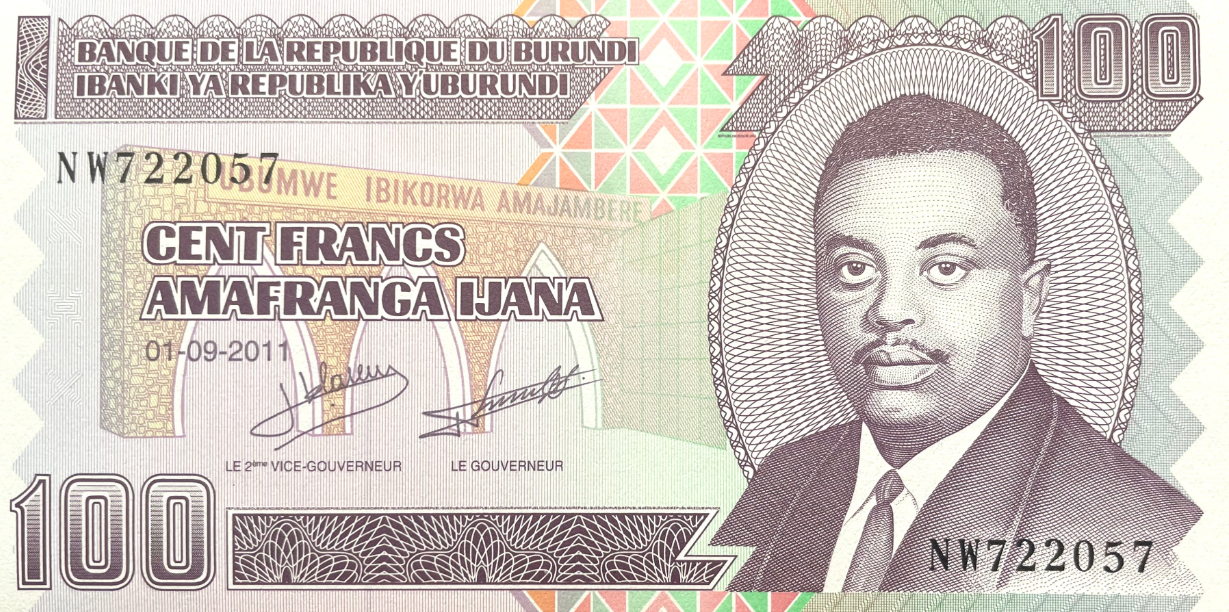The Burundi National Currency is the Burundian Franc, symbolized as BIF. As a country expert, let's explore the rich history, features, significance, and challenges associated with the Burundian Franc. This article aims to provide a comprehensive understanding of the currency, its importance in Burundi's economy, and its impact on the daily lives of Burundians.
History of Burundi National Currency
The history of the Burundian Franc dates back to the country's independence in 1962. Initially, the currency was pegged to the Belgian Congo Franc. However, after the dissolution of the Belgian Congo, Burundi introduced its own currency, the Burundian Franc, in 1964. The transition to a sovereign national currency symbolized the nation's autonomy and economic development.
Characteristics of the Burundian Franc
The Burundian Franc is subdivided into 100 centimes and is issued in both coins and banknotes. The coins are denominated in smaller values, while banknotes cater to larger transactions. The currency is regulated by the Central Bank of Burundi, which ensures stability and oversees monetary policy. As a legal tender within the country, the Burundian Franc is widely accepted for commercial transactions, making it an integral part of the national economy.
Design and Denominations
The Burundian Franc banknotes feature prominent national symbols and historical figures. The designs reflect Burundi's rich heritage, showcasing iconic landmarks, flora, and fauna. The banknotes are available in various denominations, including 500, 1,000, 2,000, 5,000, and 10,000 Francs, each with distinct colors and security features. Similarly, coins are issued in smaller denominations such as 1, 5, 10, 50, and 100 Francs.
Exchange Rates and Value
The exchange rate of the Burundian Franc fluctuates based on economic factors and international trade. The Central Bank of Burundi actively manages the currency's value to maintain stability and support the country's export-oriented economy. It is important to stay updated with the latest exchange rates when engaging in international transactions involving the Burundian Franc.
Significance of the Burundi National Currency in Burundi’s Economy
The Burundian Franc plays a vital role in Burundi's economy. It facilitates domestic and international trade, serves as a store of value for individuals and businesses, and supports economic growth. As the primary medium of exchange, the Burundian Franc enables the functioning of various sectors, including agriculture, manufacturing, and services. It fosters financial inclusion and empowers Burundians to participate actively in the economy.
Central Bank and Monetary Policy
The National Bank of Burundi, the country's central bank, regulates the Burundian Franc and formulates monetary policies to maintain price stability and foster economic growth. Through measures such as interest rate adjustments and reserve requirements, the central bank influences the money supply and credit conditions in the country. Effective monetary policies are essential to ensure a stable and robust financial system.
Challenges and Issues Faced by Burundi National Currency
Despite its significance, the Burundian Franc faces challenges and issues that impact its stability and acceptance. Factors such as inflation, economic instability, and limited foreign exchange reserves can put pressure on the currency's value. It requires constant vigilance and prudent economic management to mitigate these challenges and maintain confidence in the Burundian Franc.
Comparison with Other Currencies
To gain a broader perspective, it is valuable to compare the Burundian Franc with other currencies. While the Burundian Franc may not be as strong as major global currencies, it plays a crucial role within the Burundian economy. Such comparisons provide insights into exchange rates, purchasing power, and the relative value of the Burundian Franc in international markets.
Burundi National Currency FAQs
Q: Can I use the Burundian Franc outside of Burundi?
A: The Burundian Franc is primarily used within Burundi and might not be widely accepted in other countries. It is advisable to exchange currency before traveling.
Q: What are the security features of the Burundian Franc banknotes?
A: The banknotes incorporate various security features, including watermark, holographic strips, and raised printing, to deter counterfeiting.
Q: How often does the Central Bank of Burundi review the monetary policy?
A: The Central Bank of Burundi regularly reviews its monetary policy to adapt to changing economic conditions and ensure stability.
Q: Can I exchange Burundian Francs for other currencies at international airports?
A: While some international airports may offer currency exchange services, it is advisable to exchange currency at reputable banks or authorized exchange offices for better rates.
Q: Are Burundian Franc coins widely used in daily transactions?
A: Yes, Burundian Franc coins are commonly used for smaller transactions, such as purchasing groceries or paying for transportation.
Conclusion
The Burundian Franc is not just a currency; it represents the identity and economic aspirations of the Burundian people. It is a testament to the country's progress, resilience, and determination. As Burundi continues its journey towards economic development, the Burundian Franc remains a key pillar supporting the nation's growth and prosperity.
References
- Central Bank of Burundi - www.brb.bi
- "Burundi" - CIA World Factbook - www.cia.gov/library/publications/the-world-factbook/geos/by.html
- "Burundi: Economic Developments and Investment Climate" - World Bank - www.worldbank.org/en/country/burundi/publication/economic-developments-in-burundi
